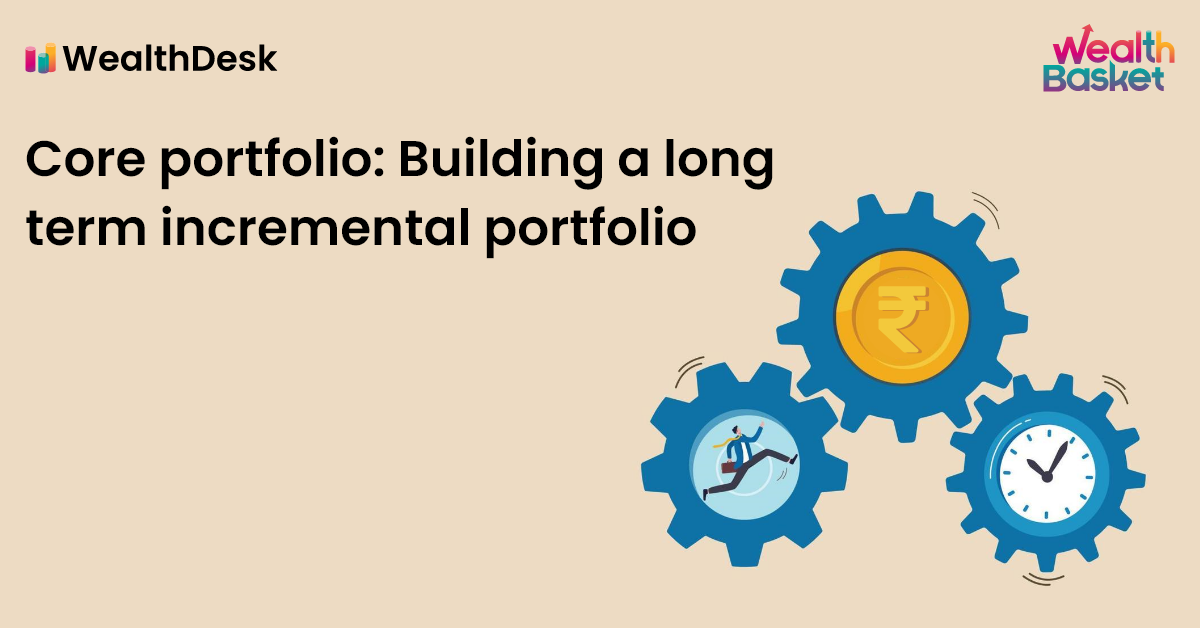There is an old Wall Street adage, “A portfolio is like a bar of soap. The more you handle it, the smaller it gets”. It’s a powerful reminder that frequent trading or constant alteration of investments in a portfolio can erode its value. Value erosion happens mainly due to transaction costs and potential poor market timing.
The Coffee Can Investing approach, on the other hand takes the philosophy of the adage to its heart. It advocates buying and holding high-quality stocks for an extended period, typically ten years or more.
In this blog, we will delve into concept of Coffee Can Investing, explore its benefits, understand its implementation, and examine real-life examples from the Indian market.
How Coffee Can Investing Originated?
In 1960, a fund manager named Robert Kirby had a client whose spouse followed his advice and purchased shares worth $5,000 each but never sold them. After the husband’s death, they found that he had accumulated significant wealth, with his investments totalling over $800,000, mainly due to his investments in Xerox.
Kirby was impressed by this “buy and forget” approach and coined the term “Coffee Can Investing” in 1984. The term originated from a historical practice in America where people stored their valuable items in coffee cans. These cans were then hidden beneath the mattress and stayed there for many years until the need for the valuables arose.
How Does Coffee Can Investing work in Indian Context?
The strategy is based on two key filters.
- Companies in the portfolio should have a market capitalization of over ₹100 crores, ensuring access to reliable information and reducing information asymmetry.
- Companies should have achieved consistent sales growth of over 10% in the past decade, accompanied by a Return on Capital Employed (ROCE) of more than 15%. These criteria ensure that the chosen stocks have a track record of strong growth and profitability.
Apart from these, you can use these additional filters to screen stocks.
- The company should have a competitive advantage over its competitors in the sector or industry to ensure that the growth prospects remain intact for a long time.
- The company and its products should have a good brand value and recall amongst consumers.
- The company should already be in existence for at least ten years.
Why does Coffee Can Investing outperform the benchmark?
There are several reasons why Coffee Can Investing has the potential to outperform the benchmark:
Reduced volatility
By adopting a long-term perspective, investors can weather short-term market fluctuations and benefit from the overall growth trajectory of high-quality stocks.
Power of compounding
Holding stocks for an extended period allows the power of compounding to work its magic. Over time, the compounding effect can significantly enhance investment returns.
Cost savings
Unlike frequent trading, Coffee Can Investing minimizes brokerage fees and transaction costs, allowing investors to preserve a greater portion of their returns.
Real-life examples from the Indian market:
To illustrate the effectiveness of Coffee Can Investing, let’s examine a few notable examples from the Indian market:
Asian Paints
With a consistent track record of growth and a dominant market position, Asian Paints has been an excellent long-term investment. Over a ten-year period, the stock has delivered impressive returns, significantly outperforming the benchmark indices.
Titan Company
Known for its iconic brand and strong presence in the jewellery and watch segment, Titan Company has consistently demonstrated growth and profitability. Investors who held Titan Company shares for an extended period have been rewarded with substantial returns.
HDFC Bank
As one of India’s leading private sector banks, HDFC Bank has consistently delivered strong financial performance and displayed prudent management practices. Investors who adopted the Coffee Can Investing approach with HDFC Bank shares have reaped significant rewards over time.
Final Thoughts
Coffee Can Investing offers a simple and practical approach to long-term wealth creation. By selecting high-quality stocks, adhering to stringent criteria, and holding them for a considerable period, investors can potentially outperform the market and enjoy the benefits of compounding.
While the strategy requires patience and discipline, it eliminates the need for constant monitoring and trading, making it suitable for investors seeking a low-maintenance approach to wealth building.
(Disclaimer: The examples mentioned in this blog are for illustrative purposes only and should not be construed as investment advice. Before making any investment decisions, conduct thorough research and consult your financial advisor.)
At WealthDesk, we help you to invest in WealthBaskets, i.e. the combinations of stocks and ETFs reflecting an idea, theme, or investment strategy, and are created by SEBI-licensed investment advisors and research analysts.
FAQs
Robert Kirby coined the term “Coffee Can
Investing” in 1984 after taking inspiration
from a historical practice in America where people
stored their valuable items in coffee cans.
You can use these filters to screen stocks for
coffee can investing
-The stock should have a
market capitalization of over 100 crores.
-The
stock should have achieved consistent sales growth
of over 10% in the past decade.
-The stock
should have a Return on Capital Employed (ROCE) of
more than 15%.
-The stock should have a
competitive advantage over its competitors in the
sector or industry.
-The company should already
be in existence for at least ten years.
-The
company and its products should have a good brand
value
Investing in a Coffee Can portfolio could benefit you if you have a long-term investment horizon and are willing to ride out market volatility.
These are some of the flaws of coffee can investing
approach
–Requires substantial patience:
This strategy involves long-term investing, often
spanning several years, which requires significant
patience and tolerance for market fluctuations.
–Based on past performance:
The strategy assumes that a company that has
performed well in the past will continue to do so in
the future, which is not always the case.
–Lack of flexibility:
The Coffee Can strategy discourages selling shares,
which can limit the flexibility to react to changing
market conditions or move investments to more
promising opportunities.


















